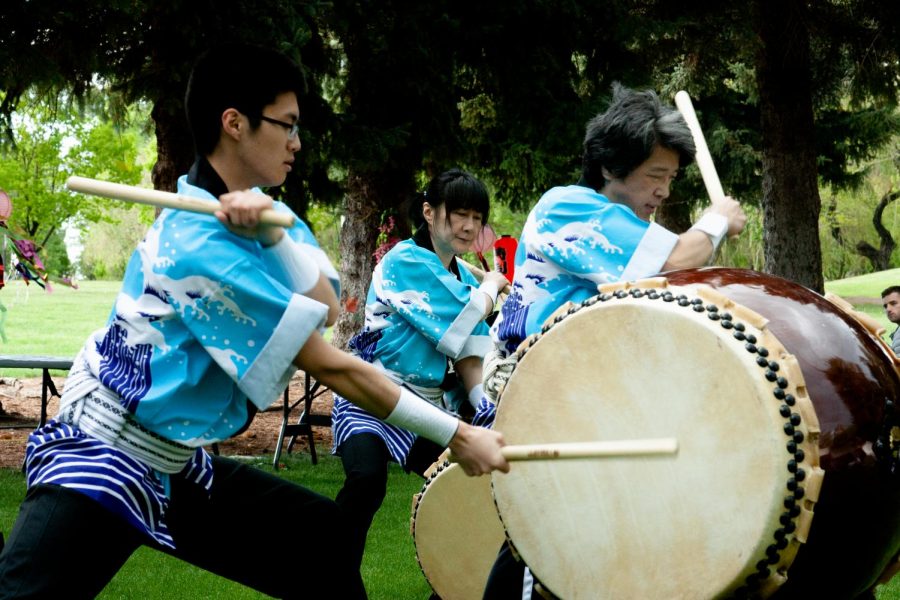Japanese culture comes to CWU
School of Taiko Seattle group preformed traditional Japanese songs during Haru Matsuri (はるまつり). The school is based out of Bellevue Collage.
May 16, 2018
Haru Matsuri, the Japanese Spring Festival, took place last Friday on the Science Building’s front lawn and was a full-blown display on the ins and outs of Japanese culture. Lanterns hung between trees blew in the Ellensburg wind while several pieces of Japanese culture, including Kendo sticks and Japanese yo-yos, were on display.
Mark Werdin, Asia University America Program (AUAP) student services coordinator, said Japanese culture takes after “Omotenashi.”
“[Omotenashi] means customer service or hospitality. Taking care of people and bringing them in and treating them well,” Werdin said.
In Japan, residents can leave a bike unlocked without fear of it being stolen, and lost wallets will be returned with the money still inside. “And that’s how I fell in love with Japan by being welcomed in there and I worked there for six years. They bend over backwards to treat you well,” Werdin said.
Makoto Sasaki, 22, oversaw the Japanese calligraphy stand where participants gave a shot at writing in Japanese with a paint brush. Makoto believes that in Japanese culture, harmony is one of the most important aspects to everyday life.
Japanese culture is ancient with traditions that differ much from our young, American way of life in everything from the expansive literature to their food. Food available at Haru Matsuri consisted of noodles, chicken, and egg rolls.
Yo-yos are different in Japan as well. Although Japanese yo-yos are adequate time wasters like their western counterparts, they are made from water balloons and bear little resemblance to the American toy.
Edward Hyakau, 19, was in charge of the Japanese yo-yo stand and explained that they more resemble a fishing rod than anything else.
“You see a bamboo stick and there’s paper clips connected to it with string that makes the fish hook,” Hyakau said.
Perhaps the most musical display at the Japanese Spring Festival was the Kokon Taiko, an oversized drum which the drummers would beat with large sticks. These drums differed from what would be considered normal drums because of their volume and size. Each drum hit bellowed out across the lawn.
Japanese culture was not the only one on display at Haru Matsuri. Filipino cooking was a welcome addition to the festivities as was Polynesian stand. The representation of culture reflected the diversity of CWU’s student body.


